Choosing the best coffee varieties today will help improve productivity and product quality, while ensuring sustainable development for growers.
As Vietnam's coffee industry continues to grow, selecting the best coffee varieties has become a crucial factor in ensuring both high yield and product quality. Choosing the right variety not only enhances economic efficiency but also helps farmers adapt to natural conditions and reduce disease risks. This article explores and analyzes the top coffee varieties that are most suitable for the Vietnamese market and climate.
The TR4 coffee variety, belonging to the Robusta family, is one of the best coffee varieties today and is widely cultivated in Vietnam. Originating from Hoa Thuan commune, Dak Lak province, TR4, also known as 138, has been cloned to develop superior traits, meeting the needs of coffee farmers.
TR4 coffee trees have wide canopies and slightly drooping branches, with an average height of 2 to 3 meters, making them easy to harvest and care for. The leaves are lance-shaped, 10-15 cm long, light green when young, and gradually turn yellow-green as they mature.
When ripe, TR4 coffee cherries have an orange-red color, and the beans are medium to large. Notably, the trees have high yields, ranging from 5 to 7 tons per hectare, and contain caffeine levels of up to 1.7g/100g of dry matter, offering high economic value to farmers.
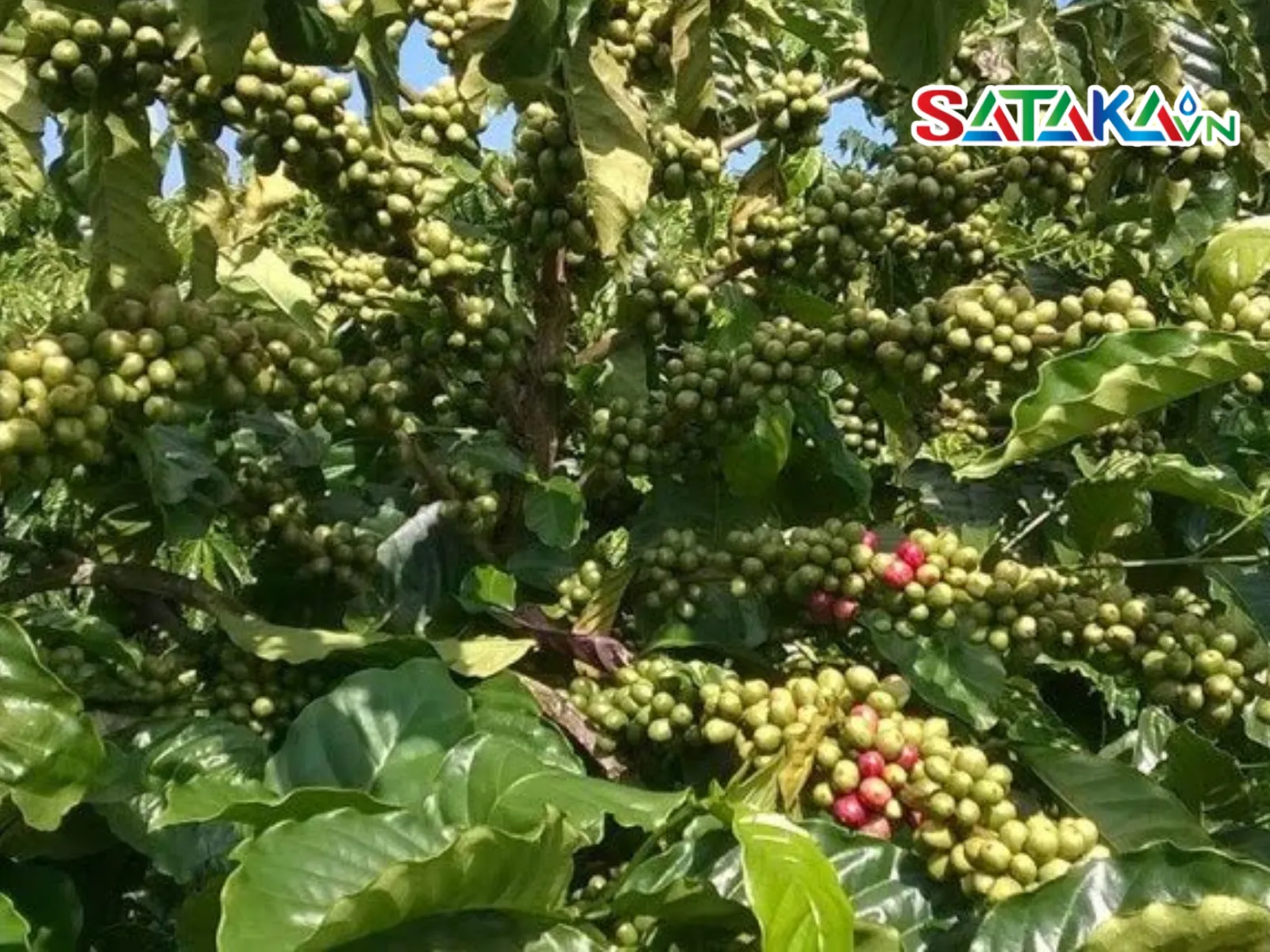
Coffee plant variety TR4
Advantages: TR4 coffee trees grow and develop rapidly, making them suitable for replanting or intercropping. They are highly resistant to many diseases, particularly leaf rust, and adapt well to various climatic conditions, making them one of the best coffee varieties on the market.
Disadvantages: Due to their extensive branching, regular pruning is necessary to maintain optimal productivity. Farmers need to pay close attention and dedicate time to proper tree care to achieve the best results.
The TR9 coffee variety, another excellent option, also originates from Dak Lak and has been certified by Vietnam's Ministry of Agriculture and Rural Development as a top-tier breed. As part of the Robusta family, TR9 is favored for its outstanding growth characteristics and disease resistance.
TR9 coffee trees are highly branched, forming wide canopies with slightly drooping branches. Their medium height makes them easy to manage and care for. The lance-shaped leaves are light green when young, turning dark green as they mature.
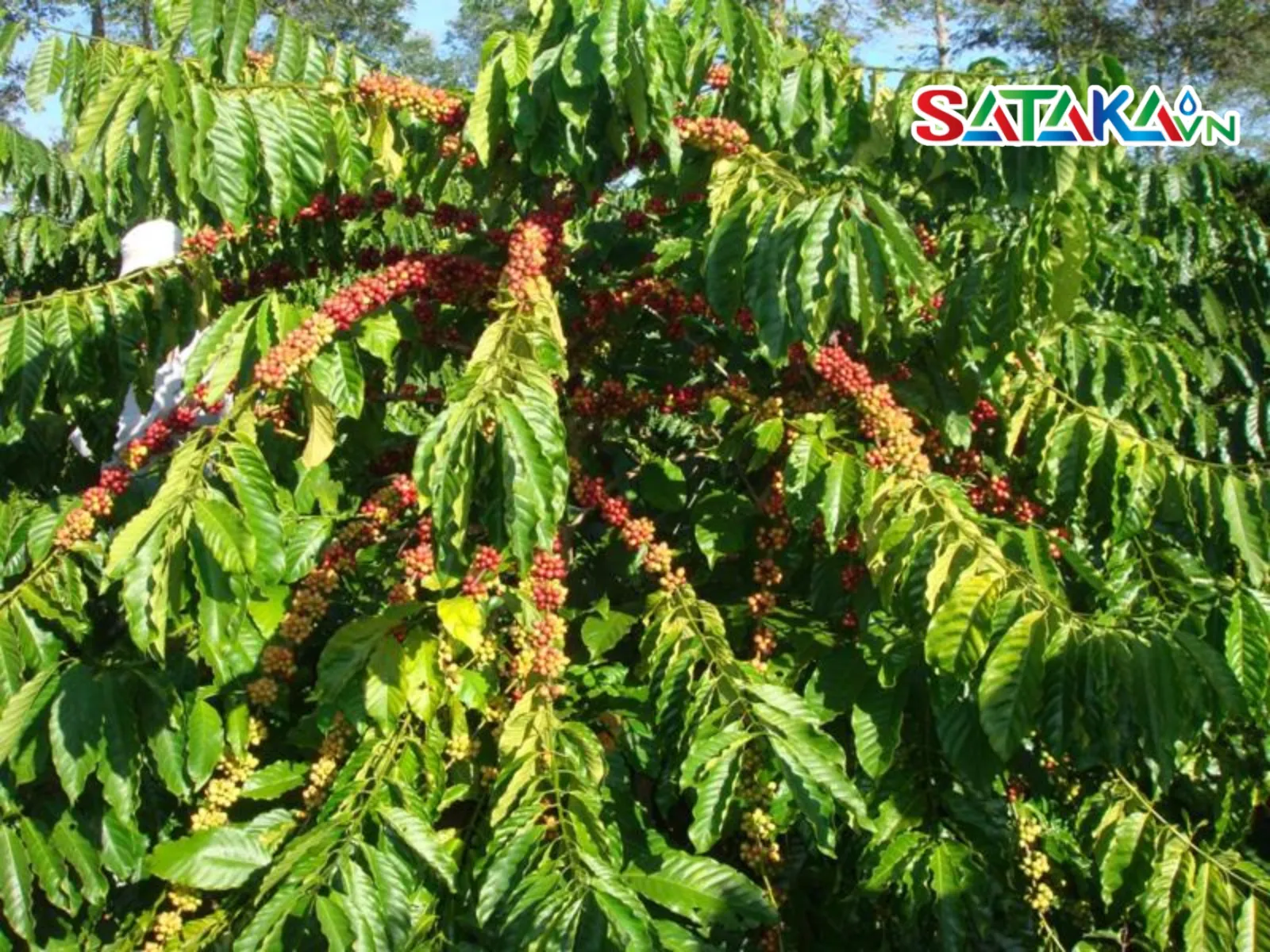
Coffee plant variety TR9
The ripe cherries of TR9 are deep red, large, and oval-shaped, facilitating easy harvesting. The beans are larger than those of many other varieties, offering advantages in both yield and quality. TR9 trees can produce 4 to 7 tons per hectare, an impressive figure, especially when combined with their high caffeine content, making TR9 an ideal choice for those seeking the best coffee varieties.
Advantages: TR9 coffee trees are robust and grow quickly, with strong resistance to diseases such as leaf rust and pink fungus. They adapt well to various environmental conditions, making them easy to cultivate and requiring less intensive care.
Disadvantages: The slightly larger cherries and beans can pose minor challenges during harvesting if not organized efficiently. However, concentrated planting can simplify the process and maintain productivity.
The TRS1 coffee variety, developed by the Tay Nguyen Institute of Agriculture and Forestry Research, is one of the best coffee varieties today. Widely cultivated in the Central Highlands, TRS1 has demonstrated excellent adaptability to the region's climate, significantly improving coffee quality and yield.
TRS1 coffee trees produce horizontally branching canopies, creating space for optimal cherry development. The large canopy is adorned with lance-shaped leaves that darken as they mature, giving the tree a robust appearance.
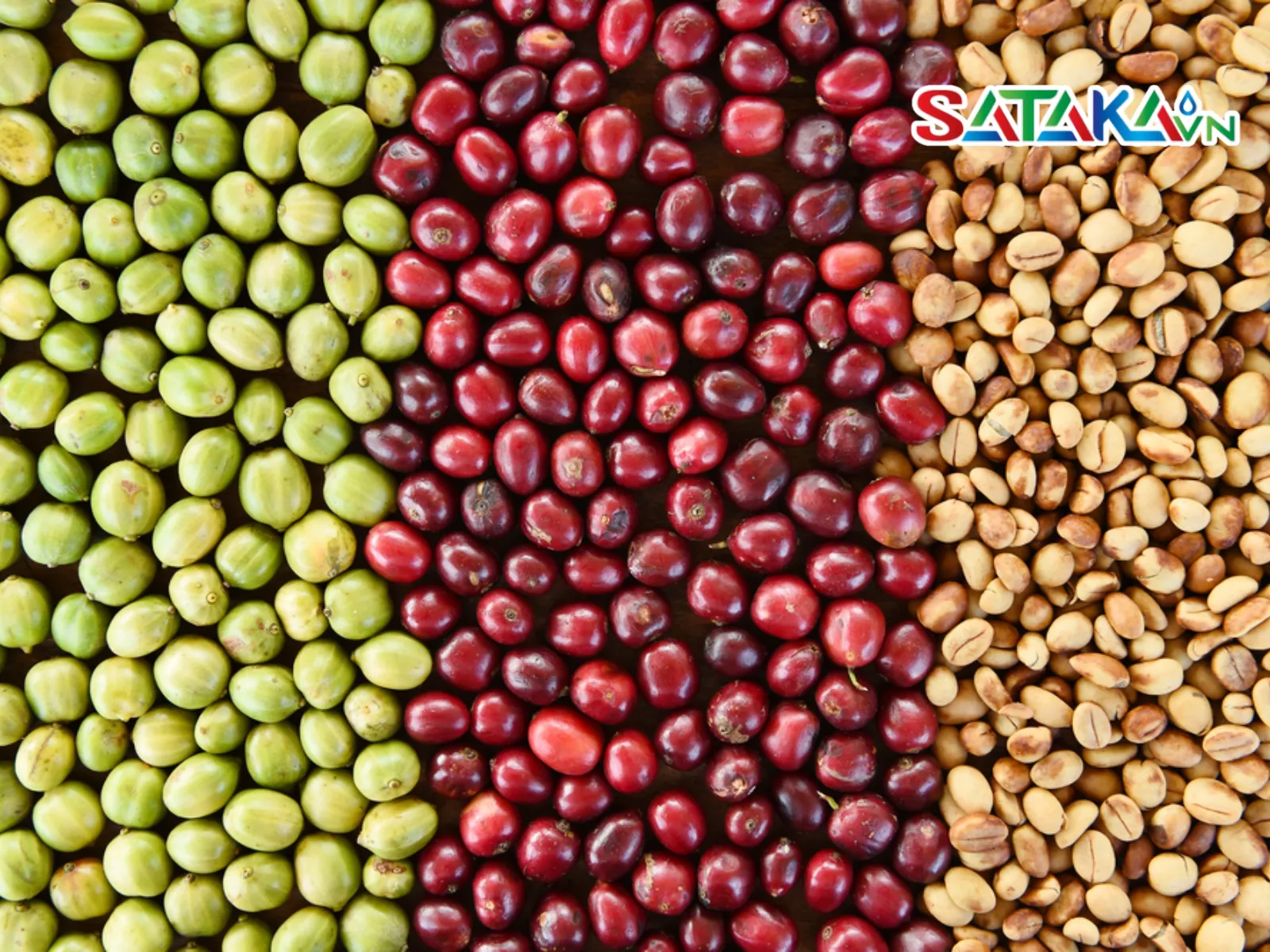
Coffee plant variety TRS1
The ripe cherries of TRS1 are deep red, with medium-to-large beans that ensure premium quality. Yielding between 4 and 6 tons per hectare, TRS1 offers economic efficiency while meeting market quality demands. The ideal planting distance is 3 meters between trees to optimize growth without overcrowding.
Advantages: TRS1 stands out for its excellent adaptability and rapid growth. The variety is highly drought-tolerant, making it suitable for the harsh weather conditions of the Central Highlands. Additionally, TRS1 is resistant to diseases such as leaf rust and pink fungus, reducing risks and plant protection costs for farmers.
Disadvantages: Due to its extensive branching, TRS1 is unsuitable for high-density planting. Farmers need to carefully plan tree spacing and cultivation practices to ensure optimal growth and prevent overcrowding.
The TS5 coffee variety, also known as Green Dwarf coffee, originates from Lam Dong province and belongs to the Robusta family. TS5 is one of the best coffee varieties today, thanks to its strong disease resistance and suitability for novice farmers with limited experience in coffee cultivation.
TS5 coffee trees have medium height and drooping branches, forming a moderate canopy that is easy to manage and harvest. The cherries are abundant, large, and thin-skinned, which enhances production efficiency and ensures high-quality beans. TS5 achieves impressive yields of 6 to 8 tons per hectare. The ideal planting distance is 2.8 meters between trees to maximize growth and land use.
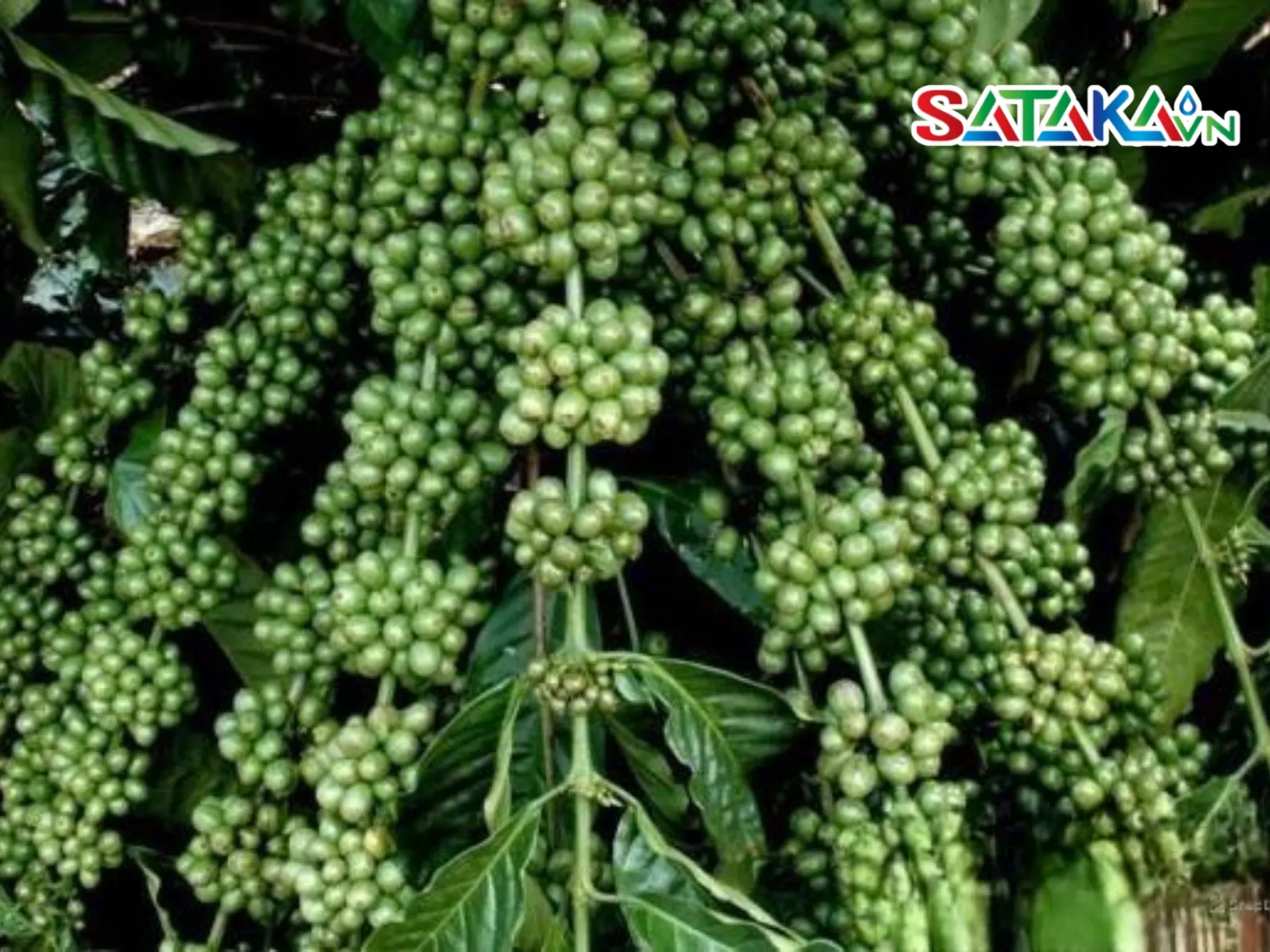
Dwarf green coffee tree variety (TS5)
Advantages: TS5 can be planted at higher densities compared to other coffee varieties, maximizing land use. It is known for its high and stable yields, ensuring consistent income for farmers. TS5's excellent disease resistance reduces risks and plant protection costs, making it suitable even for beginners.
Disadvantages: TS5 seedlings are relatively expensive compared to other coffee varieties, which may deter new farmers or those with limited capital. However, its long-term benefits make TS5 a worthy investment for future gains.
Originating from Dak Mil district in Dak Nong province, the Thuận An Đắk Mil coffee variety is a latecomer compared to other varieties but has quickly established itself as one of the best options, thanks to its superior yield and quality.
These trees are medium in height with moderate canopies and slightly drooping branches, making them easy to manage and care for. The cherries are relatively large, with thin yet sturdy skins that resist falling when ripe, ensuring optimal quality at harvest. With yields ranging from 6 to 8 tons per hectare, this variety offers high and stable economic returns for growers. The ideal planting distance is 2.8 to 3 meters between trees to optimize space and growth.
Advantages: Thuận An Đắk Mil coffee trees grow rapidly, with high and stable yields. Their excellent drought tolerance allows them to adapt to harsh climates. Furthermore, the variety is resistant to common diseases such as leaf rust and pink fungus, reducing risks and plant protection costs. The cherries’ resistance to falling makes harvesting and storage more convenient, minimizing product losses.
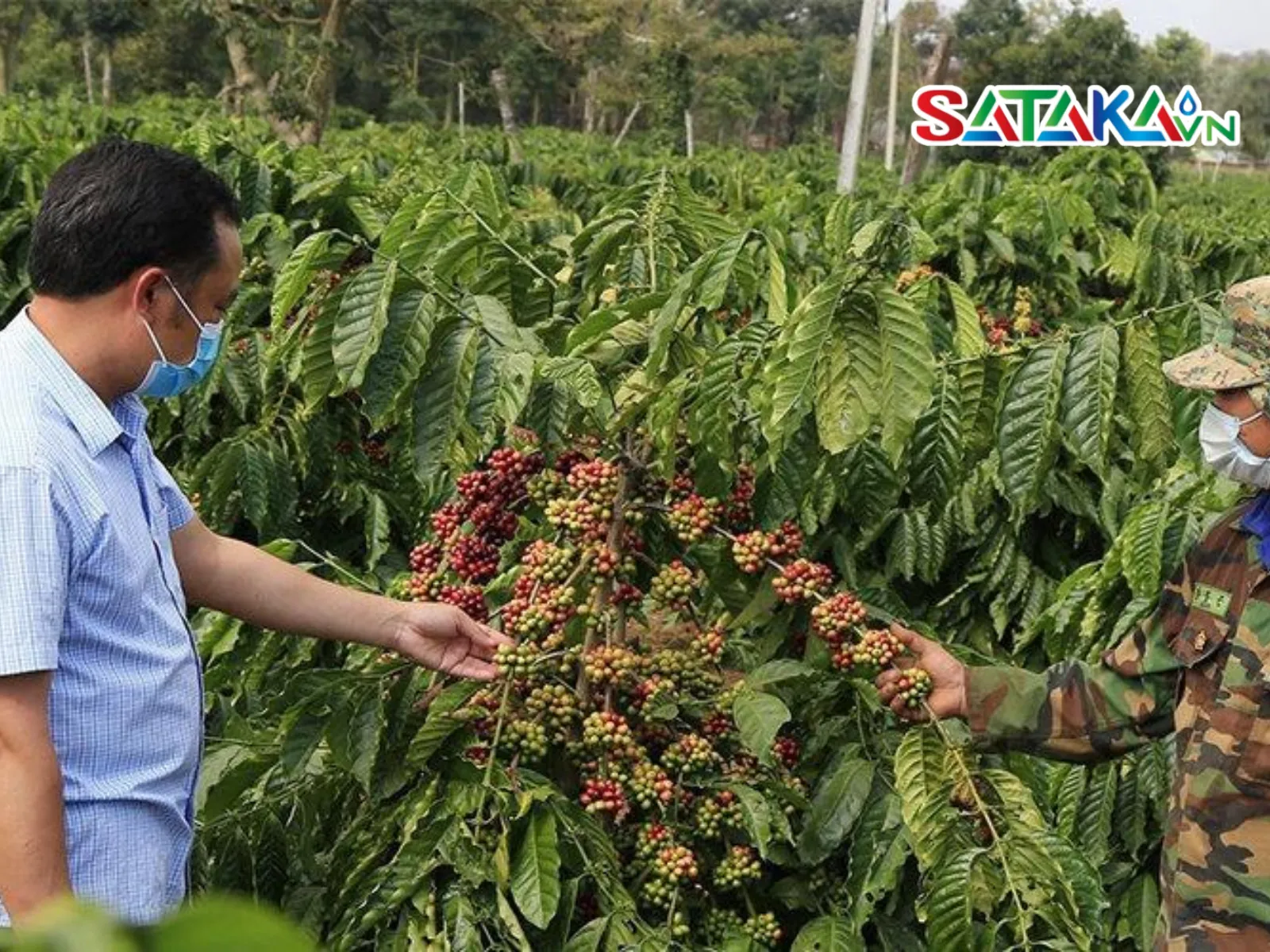
Thuan An Dak Mil coffee tree variety
Choosing the best coffee varieties not only boosts yield and quality but also ensures sustainable development for farmers. Depending on natural conditions and cultivation goals, each coffee variety offers unique advantages. With the information provided by Sataka, you can select the most suitable coffee variety to optimize economic efficiency and enhance product quality.